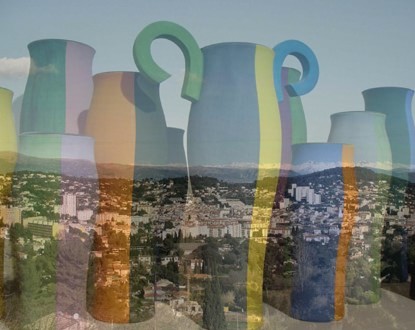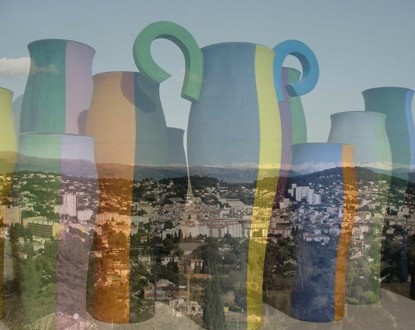In Roman times, Vallauris was a stopover on the route to Fréjus and Spain, evidenced by a milestone dating back to Tiberius. The settlement was then concentrated on the hill, and it wasn’t until the year 400 that the population moved down to occupy the current location of the village. The town was first attached to the bishopric of Antibes in 987, and half a century later, the community came under the dependency of the Abbey of Lérins. At the beginning of the 13th century, a priory with its chapel was built.

This indicates an already significant industry in the 16th century. In 1568, during the Renaissance, the priory and chapel were razed to make way for the castle, the very same one we can see today. In 1815, Napoleon I landed at Golfe Juan, then a simple sandy cove by the sea. Vallauris overlooked this coast, and it wasn’t until the arrival of the train in 1862 that the coastline gained interest, leading to the construction of a port in 1896. Pottery was then booming and was solely utilitarian.
In 1889, ceramics were indeed presented at the Paris World’s Fair, but potters mainly worked to supply household utensils. This had been the case since antiquity. Vallauris, with its clay deposits, produced pots and bricks. In 1829, there were about thirty workshops. Between the two World Wars, new materials like aluminum and stainless steel rendered pottery obsolete.
It was then that Clément Massier’s invention of 1889 became Vallauris’ lifeline. No longer would people talk of pots, bricks, or vases, but of ceramics. After the Second World War, Picasso would be the driving force of this change, this shift where utilitarian objects became art.
Other artists, such as Chagall and Jean Marais, also tried their hand at the wheel, because whether utilitarian object or work of art, pottery that became ceramics always involves the wheel and the kiln, with Vallauris clay being the indispensable material for creating these objects that give the city of potters its international reputation.
Thierry Jan



